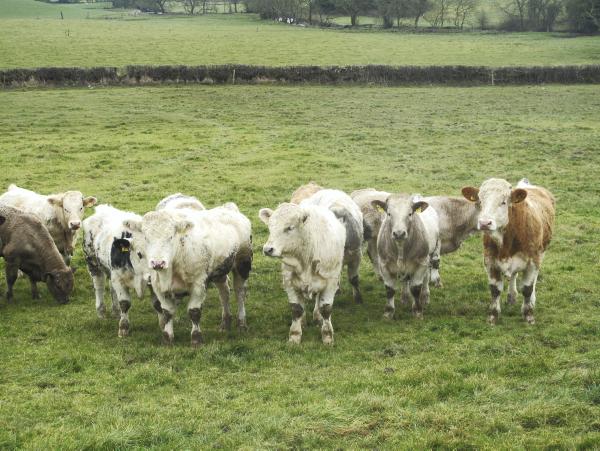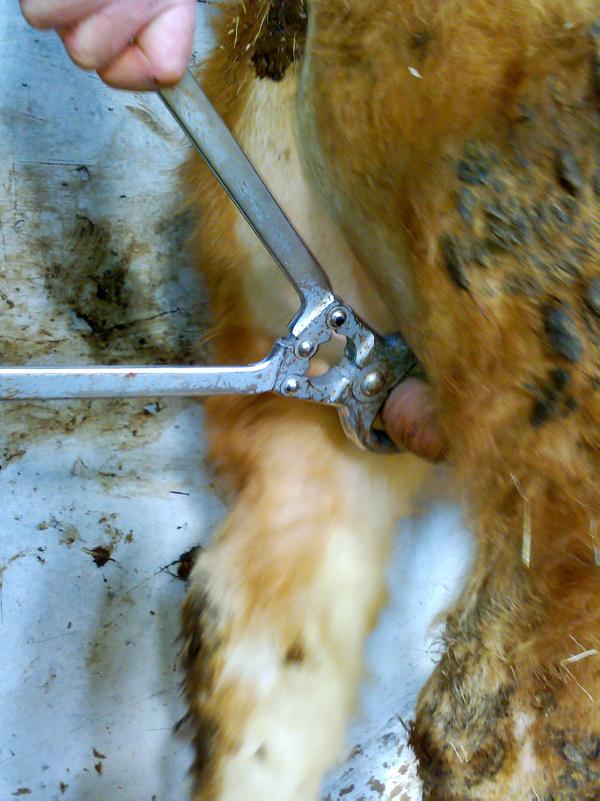The castration of male cattle intended for beef production is a common practice in many countries. Castration decreases the management problems associated with aggressive and sexual behaviour and the incidence of dark-cutting meat is lower among castrated than intact bulls.
It is considered to cause a degree of pain and stress and has been shown to elicit physiological stress, inflammatory reactions, pain-associated behaviour, suppression of immune function and a reduction in performance.
There are legislative requirements aimed at ensuring humane castration of cattle. In Ireland, it is legally required to administer anaesthesia before the surgical, Burdizzo or banding castration, of cattle greater than six months of age.
In contrast, in the UK, castration of calves without use of anaesthesia must be done before they reach two months of age.
In Ireland and the UK, rubber ring castration without use of anaesthesia can only be performed on calves less than seven days of age.
The nature and duration of an animal’s response to castration are dependent on a number of factors, including the method employed, the age of animals, the post-castration management and whether or not pain relief is provided.
Techniques used to castrate male cattle include the application of rubber rings or tightened latex bands, surgical removal of the testicles, and use of a Burdizzo instrument to crush the testicular cords.
Knife cut
There are two principal surgical techniques for castrating male cattle that are performed by a veterinary practitioner.
The first technique involves excision of the distal one-third of the scrotum with a scalpel or sharp castration knife to expose the testicles by descent through the scrotal incision.
In the second technique, the lateral scrotal walls are incised with a scalpel or a Newberry knife to expose the testicles in a vertical fashion.
The advantage of the Newberry knife is that both the lateral walls and the median septum are simultaneously incised, thereby enhancing wound drainage.
Traction is then applied manually to the exposed testes and spermatic vasculature to allow complete removal of the testicles. Manual traction usually provides adequate haemostasis for small calves.
However, the use of an emasculator in place for 30 seconds that crushes and cuts the spermatic vessels is recommended for all ages to improve haemostasis.
Proper surgical hygiene must be observed during the castration procedure to avoid any unnecessary cross-contamination, infections or sepsis. Concurrent clostridial immunisation is recommended.
Burdizzo
This is based on the principle that crushing destroys the spermatic cord carrying blood to the testicles but that the skin of the scrotum remains intact.
Each spermatic cord is crushed twice (second crush below the first) for 10 seconds each along the neck of the scrotum with the Burdizzo to ensure completeness of the castration procedure.
The Burdizzo must be in good condition. The jaws must be parallel and close uniformly across their width so pressure will be even across the jaws. Leave the Burdizzo slightly open when not in use.
With the Burdizzo technique, the testicle is left to atrophy (waste away) in the scrotum, and because of the lack of open wounds, the potential for haemorrhage or infection is minimised.
Banding
This involves the application of a specially designed elastic band with the aid of an applicator around the neck of the scrotum, proximal to the testicles. This will cause ischaemic necrosis of the testicles, eventually leading to testicular atrophy and sloughing (fall away) of the scrotum.
Small rubber rings are used for calves less than one month of age (rubber ring castration), and for older calves, a heavy wall latex band is used along with a grommet to securely fasten the tubing at the appropriate tension.
Tetanus has been reported in banded calves, therefore, animals should receive tetanus prophylaxis to minimise the risk.
Research: stress and pain relief
At Teagasc, Grange Beef Research Centre, the effect of Burdizzo castration of young calves ranging from 1.5, 2.5, 3.5, 4.5 and 5.5 months of age has been examined.
Calves castrated at 1.5 months of age had the least increases in measures of stress and scrotal swelling following castration. There was no effect of castration on the overall 42-day growth rates of calves.
Further research at Teagasc, Grange Beef Research Centre reported that use of local anaesthesia for castration of 5.5-month-old calves failed to reduce the stress associated with either Burdizzo or surgical castration contrary to popular belief.
Indeed, it was confirmed that local anaesthetic does not suppress the stress hormone (cortisol) or prevent suppression of immune function when used with surgical castration, but when the anti-inflammatory drug Ketoprofen was administered, acute stress (as measured by cortisol and immune responsiveness) was reduced.
The results indicated that systemic analgesia (using Ketoprofen) is more important than local anaesthesia during castration to alleviate acute stress.
Overall liveweight gain (LWG) was higher 0 to 28 days post-castration in calves that received local anaesthetic (LA) with pain relief (Ketoprofen) than in control, surgical alone and surgical with local anaesthetic treatments (Table 1).
The routine use of local anaesthesia alone for procedures such as castration in calves may need to be re-considered.
Delayed castration
There is a general perception among producers that delaying castration could extend the production advantages of keeping animals as bulls beyond puberty or weaning.
While after puberty bulls always grow faster than castrates, the liveweight advantage is largely lost when the bulls are ultimately castrated.
A number of studies have also shown no advantage in delaying castration up to 17 months of age in terms of slaughter weight or carcaseweight at 22 months.
Split castration
The effects of timing of complete or split castration on performance of beef cattle was investigated at Grange Beef Research Centre.
In one experiment, 144 Friesian and Charolais × Friesian calves (mean liveweight 214kg) at pasture were assigned to three castration treatments: 1) complete castration in autumn; 2) split castration (right testicle in autumn and left in spring); 3) complete castration in spring.
There was no significant effect of castration treatment on liveweight gains to the end of the second grazing season.
In a second experiment, 72 Charolais × Friesian calves (mean liveweight 241kg) at pasture were assigned to low (silage only) or high (silage and 2kg of concentrates per head daily) feeding levels in winter using the castration procedures as described in the first experiment.
They were then turned out to pasture for a 181-day grazing season. It was concluded that neither time of castration nor splitting of castration significantly affected liveweight at the end of the second grazing season.
Burdizzo or banding castration
Teagasc, Grange Beef Research Centre also conducted an on-farm study which compared Burdizzo with banding as castration methods using 12-month-old bulls.
Animals weighing 399kg from four different farms were assigned to one of three treatment groups: banding castration (80 bulls), Burdizzo castration (83 bulls), or controls (80 bulls). Local anaesthesia was given with injection of 2% lignocaine (local anaesthetic).
Animals were injected 15 minutes prior to banding or Burdizzo castration.
The band was applied using the Callicrate Smart Bander. Covexin-8 containing tetanus toxoid was administered four weeks before (primary dose) and on the day of castration (booster). All animals were turned out to pasture on the day of castration.
Both castrate groups lost in excess of 1.0kg/day in the first two weeks after castration (Table 2). Intact bulls lost 0.49kg/day and this is typical for this type of animal going to grass.
Overall, intact bulls grew faster than castrates and performed better than either castration treatment.
There was no difference between the performance of band and Burdizzo castrates during the period 15 to 84 days post-castration.
In band castrates, scrotal atrophy commenced by day 14 post-banding castration and all band castrates had lost their scrotums by day 84.
Burdizzo castrates had swollen testicles and scrotums on day 14 (14% of animals), 28 (4%), 56 (24%) and 84 (4%) post-castration.
Dr Bernadette Earley and Dr Gerry Keane are based in Teagasc, Grange Beef Research Centre, Dunsany, Co Meath.










SHARING OPTIONS